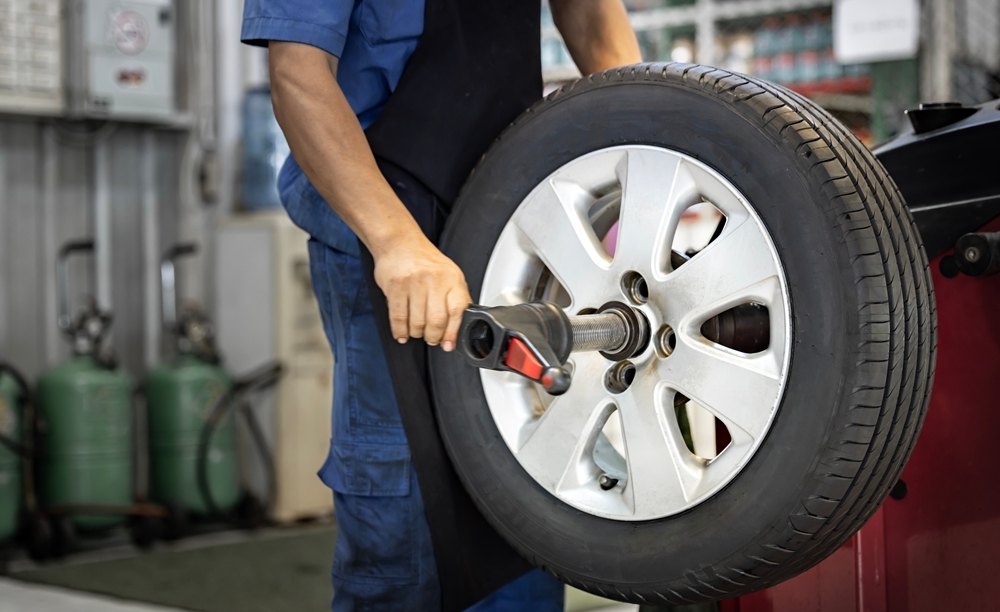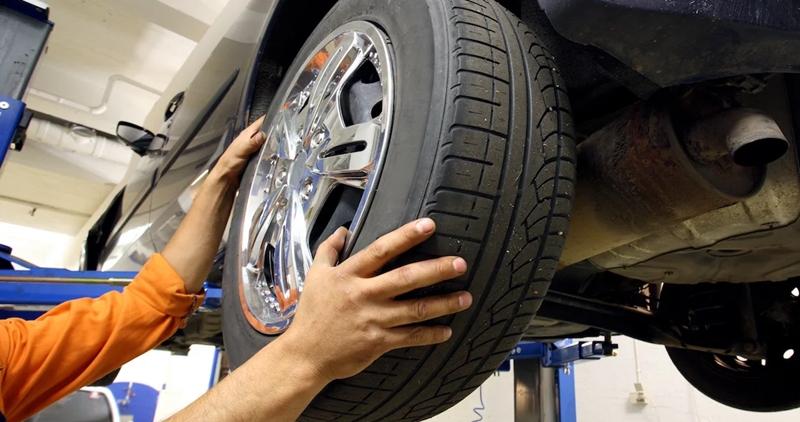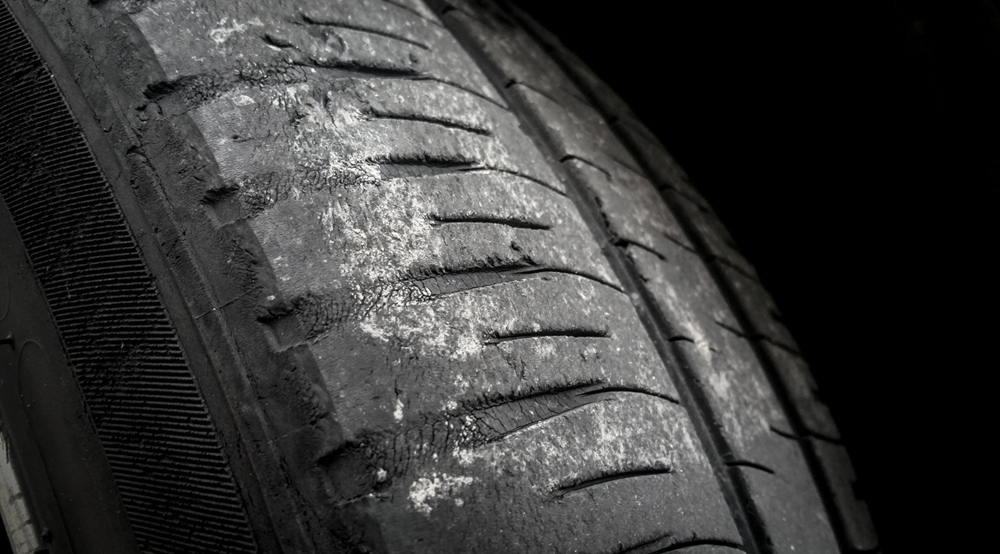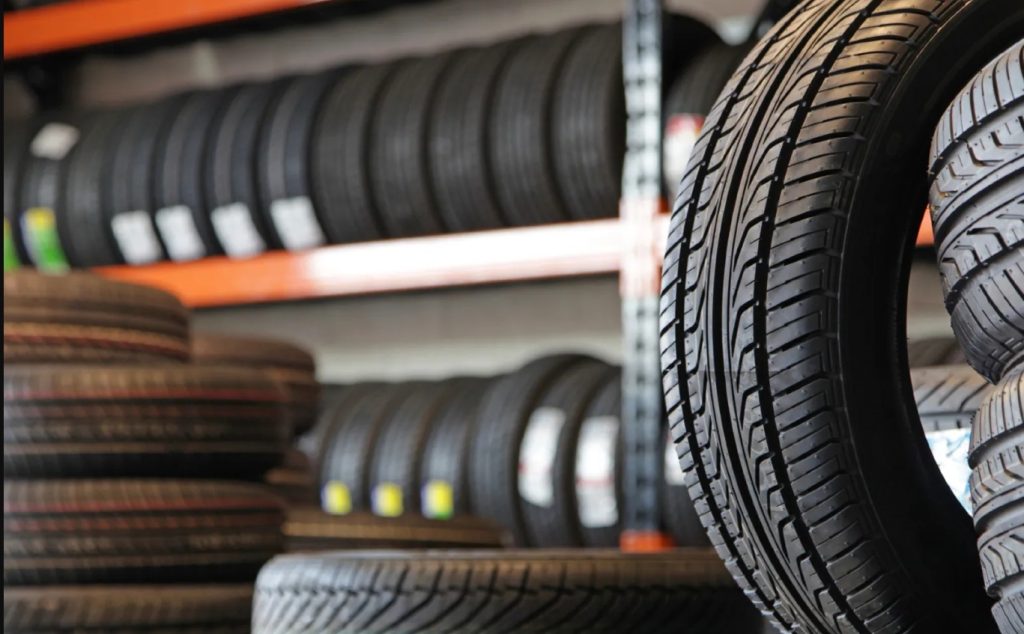Overview
Ever wondered, “how often should I rotate my tires” while cruising down the highway? You’re not alone. This simple maintenance task is often overlooked but can save you serious cash and extend your tire life by thousands of miles.
In this guide, we’ll break down everything you need to know about tire rotation schedules for different vehicles, explain why it matters, show you how to tell when it’s time, and even give you some DIY tips if you’re feeling handy. Whether you drive a sedan, truck, or all-wheel-drive vehicle, understanding how often you should rotate your tires is essential for safety, performance, and getting the most value from your rubber investments.
Also read: How Often Should I Change My Tires? 7 Smart Tips for a Safer, Smoother Ride
Why Tire Rotation Matters (And Why You Shouldn’t Skip It)
Let’s face it – tires aren’t cheap. The average set costs between $400–$1,500, so you want them to last as long as possible. Rotating your tires regularly ensures they wear evenly, which can extend their lifespan by up to 10,000 miles (16,000 km). But that’s not the only benefit:
- Better traction and handling: Evenly worn tires grip the road more consistently, especially in wet or slippery conditions
- Improved fuel economy: Properly maintained tires can boost your MPG by reducing rolling resistance
- Smoother, quieter rides: No more annoying vibrations or road noise from unevenly worn treads
- Early problem detection: Regular rotation lets mechanics spot alignment issues, damaged tires, or worn suspension components before they become expensive problems
- Maintains warranty coverage: Many tire warranties require regular rotation to remain valid
So, how often should I rotate my tires? The general rule recommended by most manufacturers is every 5,000–7,500 miles (8,000–12,000 kilometers). However, this can vary based on your specific vehicle, driving habits, and tire type. Let’s break it down further.
7 Must-Know Facts About Tire Rotation
1. Extend Tire Life
Wondering how often should I rotate my tires? Doing so every 5,000–7,500 miles promotes even tread wear, potentially adding thousands of extra miles to your tires’ lifespan.
2. Protect Your Warranty
Failing to follow the recommended schedule for how often should I rotate my tires may void your tire warranty. Most manufacturers require documented rotations for claims.
3. Not All Vehicles Are Equal
AWD, electric vehicles, and trucks need different schedules. For them, how often should I rotate my tires? Every 3,000–5,000 miles is a safer bet due to uneven wear patterns.
4. Rotate with the Seasons
Seasonal tire changes are a great reminder for how often should I rotate my tires. Spring and fall rotations help identify wear or damage from extreme weather.
5. Catch Bigger Problems Early
Uneven wear patterns can point to alignment or pressure issues. Following proper intervals for how often should I rotate my tires allows early problem detection.
6. Stay Safe & Perform Better
Knowing how often should I rotate my tires improves handling and braking, especially in wet or slippery conditions. Even wear equals better control.
7. DIY or Pro—Just Be Consistent
Whether you do it yourself or go to a shop, the key is consistency. Set reminders and stick to your personalized schedule for how often should I rotate my tires.
Printable Tire Rotation Log Sheet
Keep track of your tire maintenance like a pro. Use this sheet to log each rotation and ensure your tires stay in top shape.
How Often Should I Rotate My Tires On My Car? Standard Recommendations
For most passenger vehicles—whether front-wheel drive, rear-wheel drive, or all-wheel drive—manufacturers typically suggest rotating your tires every:
- 5,000–7,500 miles (8,000–12,000 kilometers): This is the sweet spot for most vehicles
- Every other oil change: If you follow the standard 5,000-mile oil change schedule, this makes it easier to remember
- At least twice per year: Even if you drive less than average, a seasonal rotation before winter and summer is wise
Still wondering how often should I rotate my tires if you notice issues early? Watch for these warning signs before reaching the mileage threshold:
- Uneven tread wear (especially on front tires)
- Pulling to one side
- Vibration at highway speeds
- Differences in tire pressure needs between tires
Many modern vehicles have TPMS (tire pressure monitoring systems) that can alert you to irregular pressure. If one tire consistently loses pressure, it could be a sign it’s time to rotate.
Remember, how often should I rotate my tires isn’t the only important factor—how you rotate them matters too. Most cars use a “cross pattern” rotation: the front tires move to the opposite sides on the rear axle, while rear tires come straight forward. But if your vehicle has directional or staggered tires, you’ll need a different rotation pattern.
Also read: What Does the Tire Warranty Cover?
How Often Should I Rotate My Tires On My Truck? Special Considerations
Truck owners frequently ask, “how often should I rotate my tires on my truck?”, especially because trucks often carry heavy loads, go off-road, or tow trailers. In most cases, the answer is: more often than with standard passenger cars.
- Every 5,000 miles (8,000 kilometers): This is the most common recommendation
- Every 3,000–5,000 miles (4,800–8,000 kilometers) for trucks that:
- Tow heavy loads
- Drive off-road
- Carry full payloads
- Experience stop-and-go driving
Why does how often should I rotate my tires matter more for trucks? Here are some specific concerns:
- Staggered tires: Some trucks have larger rear tires than front
- Dually configurations: Dual rear wheels need special rotation patterns
- Off-road wear: Bumpy trails cause uneven tire wear
- Heavy loads: Rear tires wear faster from hauling weight
If your truck is 4×4 with a full-size spare, consider using a five-tire rotation method. Including the spare helps all your tires wear evenly and maximizes their lifespan.
For work trucks or vehicles that tow regularly, inspect your tires monthly. Spotting wear early can help you rotate them sooner than scheduled. When in doubt, go back to that core question: how often should I rotate my tires for my driving style? If the answer is “more than usual,” listen to your tires.

All-Wheel Drive Vehicles: Special Rotation Needs
“How often should I rotate my tires on an all-wheel drive car?” is a common question—and for good reason. AWD vehicles have unique rotation requirements due to their advanced drivetrains, which distribute power differently than traditional two-wheel-drive systems.
So, how often should I rotate my tires if I drive an AWD? For most vehicles:
- Every 3,000–5,000 miles (4,800–8,000 kilometers): AWD systems typically require more frequent tire rotation than FWD or RWD vehicles.
- According to manufacturer specs: High-performance AWD systems (like those in Audis or performance SUVs) may have very specific rotation intervals.
- When tread depth differences exceed 2/32 of an inch: Even a slight mismatch in tread depth can lead to drivetrain damage or system confusion.
Here’s why AWD tire rotation is so critical:
- Drivetrain stress: Uneven wear can place strain on AWD components.
- Traction control issues: Differently worn tires can disrupt sensors, triggering unwanted traction control responses.
- Differential wear: AWD systems rely on equal tire diameters—wear variance can damage the front, center, or rear differentials.
If you’re driving an AWD vehicle like a Subaru Outback, Audi Quattro, or a compact AWD crossover, tire rotation should be at the top of your maintenance checklist. In fact, some manufacturers recommend replacing all four tires at once—even if only one is damaged—because uneven tires can throw the system off balance.
When it comes to the actual process, most AWD vehicles use a cross pattern rotation—where front tires move to the opposite rear sides, and rears come forward. However, always consult your owner’s manual. AWD systems can vary widely, and correct rotation is essential to keep the drivetrain functioning as designed.
Seasonal Considerations: When Weather Affects Your Rotation Schedule
Beyond mileage, seasonal changes can influence how often should I rotate my tires. If you live in a climate with big temperature swings or use different tires for summer and winter, rotations might need to happen more frequently.
Key seasonal rotation times include:
- Before winter: Rotating your tires before switching to winter tires (or at the start of snow season) helps balance wear.
- Springtime: Rotating your tires when you swap out winter rubber helps reveal damage from rough winter roads.
- Before road trips: Long-distance driving demands even tire wear for safety and fuel efficiency.
- After off-roading or pothole-heavy driving: Unusual terrain accelerates uneven wear.
Drivers who use dedicated winter and summer tire sets should rotate within each set when they change seasons. Mark tires with chalk to track positions, and inspect them closely for uneven wear or pressure changes.
If you’re wondering how often should I rotate my tires in areas with harsh seasonal shifts, the answer is: at least with every seasonal tire change—even if you haven’t hit the standard mileage interval.
Other seasonal tire care tips include:
- Monitor and adjust tire pressure as temperatures rise or fall
- Watch for alignment issues, especially after winter
- Combine rotation and alignment service for best results
- Keep tire maintenance logs each season

DIY vs. Professional Rotation: What You Need to Know
Many drivers ask, “how often should I rotate my tires?” but forget to consider who should do it—themselves or a pro.
Here’s a breakdown of both:
DIY Tire Rotation – Pros:
- Save $20–50 per rotation
- Learn more about your car
- Check for other problems (brakes, suspension)
- Do it on your own schedule
DIY Cons:
- Requires tools: jack, stands, torque wrench
- Risky if done incorrectly
- No professional inspection
- TPMS systems can be tricky on newer vehicles
Professional Rotation – Pros:
- Proper torque specs guaranteed
- Mechanics spot problems you might miss
- Usually includes a free alignment check
- Lifetime rotation deals available from tire retailers
- TPMS handled correctly
Professional Cons:
- Costs $20–50 per visit
- Requires scheduling
- Some places may upsell services
Whether you go DIY or professional, the key is consistency. Missing your rotation schedule can shorten tire life and void warranties. Many tire shops include lifetime rotations if you bought your tires there—making it a smart, stress-free option.
So, how often should I rotate my tires if I want the best value? Stick to your schedule and do what fits your skill level and lifestyle.
Tracking Your Rotation Schedule (And Why It Matters)
Tire rotation is only effective if you remember to do it. Forgetting just one rotation can lead to uneven wear and cost you in the long run. Here are simple ways to track how often you should rotate your tires:
- Service stickers: Place one on your windshield with mileage for your next rotation.
- Smartphone reminders: Use calendar alerts based on your average monthly driving.
- Maintenance apps: Tools like CarCare or Simply Auto help manage all vehicle tasks.
- Manual logs: Your owner’s manual likely includes a maintenance log section.
- Tie rotation to oil changes: Doing both at once makes it easier to remember.
Documenting your tire rotations is also smart for warranty coverage and resale value. Keep a record that includes:
- Date of rotation
- Mileage
- Rotation pattern used
- Tire pressure post-service
- Any notes from the mechanic (or yourself, if DIY)
Still unsure how often should I rotate my tires to maintain your tire warranty? Most manufacturers require a rotation every 5,000–7,500 miles (8,000–12,000 kilometers) with documentation. Without proof, your warranty claim for early wear could be denied.
Creating Your Personal Tire Rotation Plan
Now that we’ve covered the FAQs, let’s talk about creating a simple, reliable plan for keeping your tires in top shape. The question “how often should I rotate my tires” really comes down to your vehicle type, driving conditions, and manufacturer recommendations.
✅ For Standard Passenger Vehicles:
- Every 5,000–7,500 miles (8,000–12,000 kilometers)
- With every other oil change
- At least twice per year
This schedule works well for sedans, hatchbacks, minivans, and light-duty crossovers.
🚚 For Trucks and SUVs Under Heavy Load:
- Every 3,000–5,000 miles (4,800–8,000 kilometers)
- With every oil change
- Monthly tire checks for uneven wear
Towing, off-roading, and heavy cargo increase wear, especially on rear tires.
🚙 For AWD/4WD Vehicles:
- Every 3,000–5,000 miles (4,800–8,000 kilometers)
- Follow manufacturer-specific intervals
- Rotate more often in harsh conditions (e.g., snow, off-road, hills)
When it comes to AWD or 4WD, consistency is key. If you’re wondering how often should I rotate my tires to prevent drivetrain issues, remember that uneven tread depth can lead to expensive repairs.

When Rotation Isn’t Enough: Signs It’s Time to Replace Your Tires
Rotating your tires regularly is one of the best ways to extend their life—but even with perfect maintenance, tires don’t last forever. Understanding when to replace your tires (instead of just rotating them) is just as important as knowing how often should I rotate my tires. Let’s break down the warning signs that rotation is no longer enough.
1. Tread Depth: Know the Warning Signs
Even if you’re following your tire rotation schedule to the mile, low tread is a clear sign it’s time to replace your tires.
- The Penny Test: Insert a penny into the tread with Lincoln’s head upside down. If you can see the top of his head, the tread is less than 2/32 inch (1.6 mm), and it’s time for new tires.
- Wear Bars: Most modern tires come with built-in wear indicators—when they’re flush with the tread, it’s time to replace them.
- The Quarter Test: For better wet-weather safety, some drivers use a quarter instead. If Washington’s head is fully visible, you have less than 4/32 inch—replacement is strongly recommended.
This is where understanding how often should I rotate my tires overlaps with knowing when to replace them. Rotation can’t restore grip once tread is too shallow.
2. Tire Age: Time Matters, Not Just Tread
Even with good tread depth, old tires can pose safety risks.
- After 6 Years: Most manufacturers recommend tire replacement at the 6-year mark—even if they appear fine.
- 10-Year Limit: No tire, even if unused, should be driven after 10 years from the manufacturing date.
- Check the DOT Code: Look for the last four digits on the sidewall. For example, “1520” means the 15th week of 2020. If you’re rotating on schedule but haven’t checked tire age, you could still be at risk.
Many people ask, how often should I rotate my tires, but forget to ask how old their tires are. Aging rubber loses elasticity and grip, regardless of wear.
3. Damage You Can’t Ignore
Not all damage can be fixed by rotation or repair.
- Sidewall Damage: Cracks, bulges, or deep cuts on the sidewall mean your tire is no longer structurally sound.
- Large Punctures: Holes over ¼ inch, especially in the sidewall or shoulder, usually can’t be safely patched.
- Impact Breaks: Hitting potholes or curbs can cause internal damage that isn’t visible—but could be dangerous.
- Irregular Wear Patterns: Severe cupping, feathering, or uneven wear often signal alignment or suspension issues. Rotation won’t help at this point.
So while you’re focused on how often should I rotate my tires, remember: rotation can’t save a damaged or structurally compromised tire.
4. Performance Red Flags: What Your Car Is Telling You
Your car might be hinting that it needs new tires, not just a rotation.
- Increased Road Noise: Worn-out tires tend to get louder, especially at highway speeds.
- Handling Feels Off: If your car slides more in corners or takes longer to stop, it may be time for new tires.
- Vibration While Driving: If the shaking persists after a balance or alignment, your tires could be the problem.
- Flat Spots: Tires that develop flat areas after sitting overnight and don’t smooth out quickly may be too far gone.
When drivers ask how often should I rotate my tires, they often overlook these performance clues that suggest rotation isn’t the fix—they need a replacement.
The Bottom Line: Safety Over Savings
Even the best tire rotation schedule won’t restore worn rubber or undo internal damage. Some drivers continue rotating tires long past their safe lifespan, not realizing they’re compromising braking distance, traction, and stability.
Modern tires with proper tread depth can stop up to 30% shorter on wet roads than worn tires. That difference can be life-saving in an emergency stop.
If you’re wondering whether your tires need another rotation or outright replacement, have them inspected by a professional. Most tire shops offer free inspections, and technicians can give you an honest assessment based on age, wear, and structural integrity.
So yes, how often should I rotate my tires is a crucial question—but even more important is knowing when rotation isn’t enough.
Do you need a mechanic? Find one on the Mobile Mechanic Directory
Frequently Asked Questions: Tire Rotation Frequency
Let’s clear up some of the most common questions people ask about how often should I rotate my tires. These answers can help you fine-tune your maintenance routine and avoid costly mistakes.
-
Can rotating tires too frequently cause problems?
Not really. While there’s no need to rotate your tires every 1,000 miles, doing it more frequently than necessary won’t harm your tires or vehicle. If anything, it ensures more even wear. So, if you’re ever in doubt about how often should I rotate my tires, it’s better to err on the side of caution.
-
My tires have 50,000-mile warranties. Does this mean I can rotate them less often?
No. A 50,000-mile tire warranty doesn’t mean the tires will wear evenly for that long without rotation. In fact, most warranties require that you rotate your tires every 5,000 to 7,500 miles to remain valid. Always check the fine print, but how often should I rotate my tires to keep my warranty intact? Usually, right on schedule.
-
How often should I rotate my tires if I drive mostly on highways versus city streets?
Highway driving tends to be easier on tires because it involves less braking and cornering. If most of your driving is on highways, you may be able to push your rotation intervals toward the higher end—around 7,500 miles (12,000 kilometers). However, city driving with lots of starts, stops, and turns causes faster wear, so how often should I rotate my tires in that case? Aim for 5,000 miles (8,000 kilometers) or less.
-
Do electric vehicles (EVs) need different rotation schedules?
Yes, EVs have unique needs. Because of their heavier batteries and instant torque, tires can wear faster and unevenly—especially the front ones. Most EV manufacturers recommend rotations every 6,500 miles (10,400 kilometers) or at custom intervals based on weight distribution and driving habits. Wondering how often should I rotate my tires on an EV? Check the owner’s manual, but plan for slightly more frequent service than a traditional gas vehicle.
-
How often should I rotate my tires on a sports car with staggered wheels?
Sports cars with staggered setups (wider tires in the rear than in the front) can’t be rotated in the traditional way. Typically, you can only rotate side-to-side if tire construction allows, or you might not be able to rotate them at all. If you’re asking how often should I rotate my tires in this case, the answer might be: you can’t—so monitor wear closely and replace as needed.
Final Thoughts
So, how often should I rotate my tires overall? If you’re unsure, a safe bet is every 5,000–7,500 miles, unless your vehicle has special requirements. Tie rotations to other routine services like oil changes, and you’ll stay on top of tire wear without even thinking about it.
Remember: tire rotation isn’t just about tire life. It affects safety, fuel efficiency, ride comfort, and even your warranty. Whether you drive a compact commuter, a heavy-duty truck, or a cutting-edge EV, a good rotation schedule is one of the easiest and cheapest ways to take care of your vehicle.



